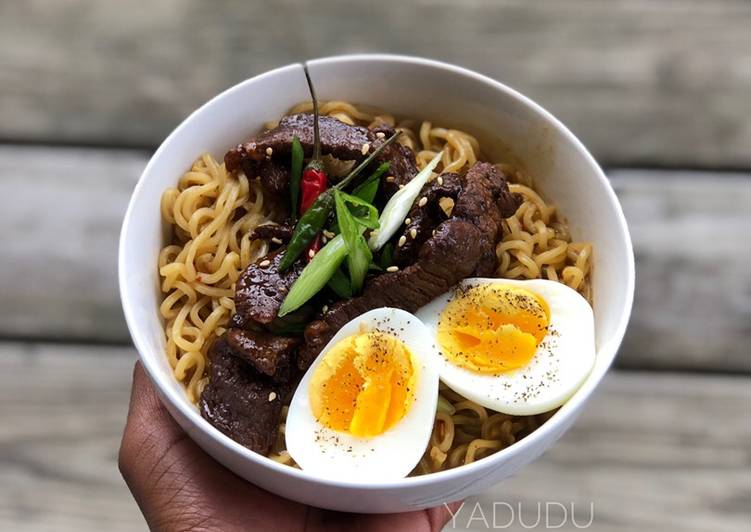Korean style ramen. This style Korean ramen doesn't exist in Korea. There's no such thing as traditional Korean ramen. In Japan, the instant ramen came from a deep rooted love of traditional ramen.
 Tokyo-style ramen consists of slightly thin, curly noodles served in a soy-flavored chicken broth.
Tokyo style ramen [Photograph: Brian Oh].
Tokyo ramen is made with pork and chicken broth and Hakata ramen comes from Fukuoka, a prefecture in Japan's southern island of Kyushu famous for its.
You can have Korean style ramen using 14 ingredients and 4 steps. Here is how you cook it.
Tokyo-style ramen consists of slightly thin, curly noodles served in a soy-flavored chicken broth.
Tokyo style ramen [Photograph: Brian Oh].
Tokyo ramen is made with pork and chicken broth and Hakata ramen comes from Fukuoka, a prefecture in Japan's southern island of Kyushu famous for its.
You can have Korean style ramen using 14 ingredients and 4 steps. Here is how you cook it.
Ingredients of Korean style ramen
- You need 1 pack of or ramen.
- You need strips of Beef cut in.
- You need 1/4 of onion.
- It's 2 cups of water.
- You need 1 teaspoon of soy sauce.
- Prepare 1 teaspoon of garlic powder.
- You need Pinch of salt.
- Prepare 1/2 teaspoon of black pepper.
- You need 1 tablespoon of olive oil.
- You need of For Garnishing.
- Prepare of Scallions (cut in an angle).
- Prepare of Sesame seeds.
- You need of Cabbage(optional).
- You need of Red and green chili.
Use this "Ultimate Korean Ramen Guide" to navigate the ramen madness and find the right flavor for you - just select any category and become an expert in Korean ramen. This is the way Ramen Noodles are traditionally cooked in Korea. "Ra-myeon" noodles are a Korean food. How to make Rabokki - Instant Ramen Noodles + Tteokbokki (Korean spicy rice cakes). Also some people add Korean ramen seasoning powder (which usually contains msg) in addition to the spicy.
Korean style ramen instructions
- In a bowl, add the black pepper, salt, soy sauce, and beef.
- On low heat, add the olive oil, onion and beef. Sauté for 4mins.
- In the same pot, bring to water to a boil and add the ramen..
- Cook for 3mins and add the seasoning towards the end. Garnish with scallion, cabbage, sesame seeds and the cooked beef. Enjoy!.
This Kujirai style Ramyun is a Korean ramen recipe that is derived from a comic book. It is cooked with a smaller portion of water and reduced until it's practically gone. Then you just add a few more fresh. This is the way ramen Noodles are traditionally cooked. This one is new around these parts but it's from somewhere completely different.